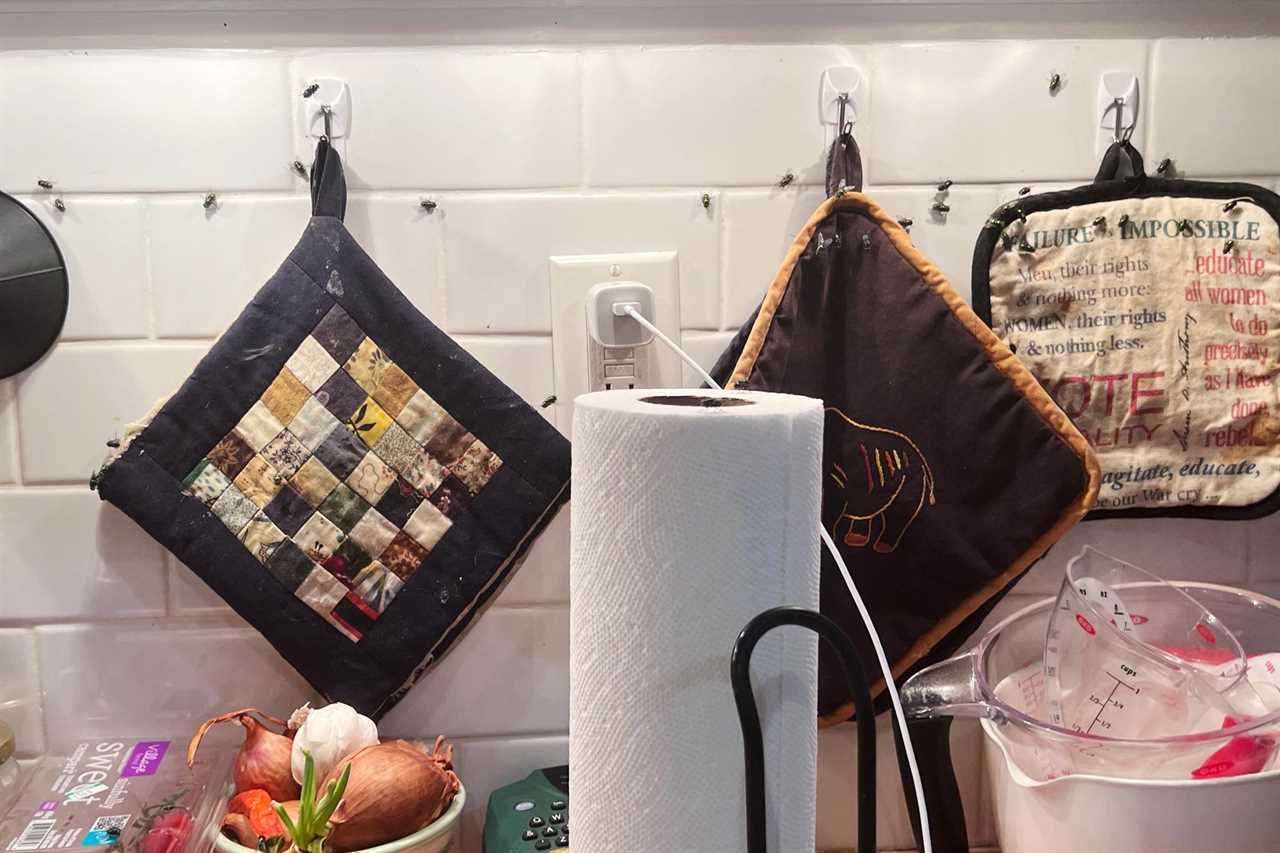My favorite aunt lives in the Northeastern U.S. After being away from home for a few days, she returned to find her kitchen overtaken by a swarm of flies. Not knowing what to do, she snapped a couple of photos and, in a cyber cry for help, texted them to her pest control guy.
If the same thing happens to you, you’ll need to act fast. Besides being a nuisance, some flies can transmit disease-causing organisms like salmonella, e-coli and even typhoid fever. Yikes!
We asked Rachel Maccini, an urban entomologist and pesticide safety education program coordinator at the University of New Hampshire Extension, to offer her insight into the characteristics and behaviors of flies. “There’s a lot homeowners can do themselves to remedy a fly infestation, though it may require some detective work,” says Maccini.
Start here:
Step One: Catch and Kill
Use a bag-type vacuum cleaner to suck up as many flies as possible. Dispose of the bag outside in a sealed trash container. Since flies can carry germs, don’t forget to wear protective gloves.
Another option: Your trusty fly swatter. This old-school method works if you’re only dealing with a handful of pests. For a larger cloud of flies, go with the vacuum method.
Step Two: Locate The Fly Breeding Site

Most flies enter the home from outside in search of shelter or food. Some species, however, breed and complete their life cycles indoors, especially if they find a wet and warm spot to start their families.
You know you’ve found the breeding site if you see small, dark clusters of spots the size of a pinhead (eggs) or pale-colored larva (maggots) resembling little worms. Once these maggots develop hard cases, flies are about to hatch!
Three common varieties of flies lay eggs indoors, each with a different preferred breeding site:
- House or cluster (aka blow) flies: These lay their eggs in moist garbage or pet waste. Adult house flies measure about 5/32- to 17/64-in. long with sponging mouthparts, a thorax with four narrow stripes and one pair of wings. Cluster flies are large and sluggish, often invading homes in fall and turning into wintertime pests.
- Fruit or vinegar flies: Usually found on overripe fruit and vegetables (i.e., bananas on the counter or tomatoes in a bowl). They’re about 1/16- to 1/5-in. long and dull brownish-yellow to brownish-black. Their head and thorax are tan-colored, while the abdomen is black and gray underneath. Some species have red eyes.
- Drain (aka moth or humpback) flies: These live and reproduce in drains where organic material tends to collect. Slightly larger than fruit flies, they range from light tan or gray to black. They’ve got furry bodies with large, oval-shaped wings.
Step Three: Eliminate the Fly Breeding Site
Your remedy depends on the type of fly.
For house or cluster fly eggs
Cover or remove garbage containers. Seal compost bins and drain and dry areas with standing water.
For fruit fly eggs
Ditch the fruit they’re attracted to. After that, Maccini recommends covering or storing susceptible food in a refrigerator for at least a week so the adult flies die off. (Their entire life cycle only spans one to two weeks.)
For drain fly eggs
Clean pipes with a brush to remove the bacterial scum that often lines plumbing, which these flies are attracted to. Use an enzyme-action product found in custodial supply stores or online to break up the sticky bond of bacteria and algae in the pipes.
Avoid bleach; it’s not effective against fly larvae. And do NOT pour insecticide down the drain. Maccini says it’s unlikely to work and can severely damage sewer and sanitation systems.
How To Prevent Fly Eggs From Hatching in Your House
To prevent the eggs, you need to keep out the flies that lay them. Try these methods:
- Keep home clean and sanitary;
- Cover food and beverages or store them in a refrigerator;
- Install or repair screens on windows and doors;
- Seal cracks and fill in crevices to the exterior with expandable caulking or other material;
- Clean litter boxes and yard of pet waste;
- Close trash cans and seal garbage bags completely;
- Remove household garbage every four to five days in hot summer months;
- Set out sticky traps, flypaper or make this simple DIY fly trap;
- Install ultraviolet light boxes that attract flies, then kill them with an electric zapper;
- Employ fly bait that contains insecticides that, when ingested, kills in minutes.
- Apply indoor fly spray (found at grocery or hardware stores) directly to the insects or their larva. Coat surfaces around windows, doors, screened-in porches and cracks with a residual fly pesticide. These types of sprays can remain active for weeks, so they’re effective at suppressing fly populations.
When To Call a Pest Professional
If you’re unable to determine which kind of fly has infested your home, Maccini advises contacting a pest control specialist ASAP. Failure to clean a breeding site thoroughly means your fly problem will most likely continue.






